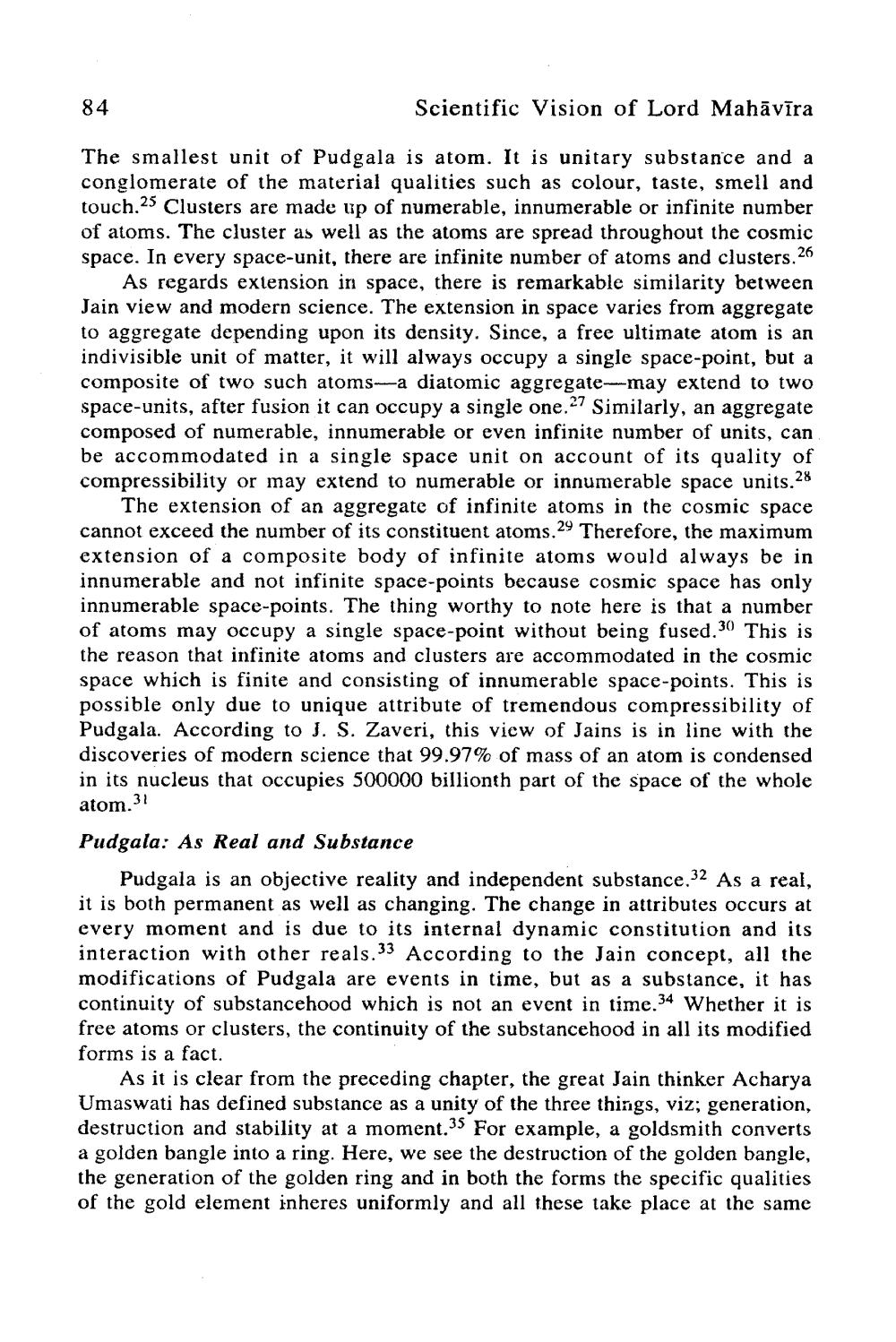________________
84
Scientific Vision of Lord Mahāvīra
The smallest unit of Pudgala is atom. It is unitary substance and a conglomerate of the material qualities such as colour, taste, smell and touch.25 Clusters are made up of numerable, innumerable or infinite number of atoms. The cluster as well as the atoms are spread throughout the cosmic space. In every space-unit, there are infinite number of atoms and clusters. 26
As regards extension in space, there is remarkable similarity between Jain view and modern science. The extension in space varies from aggregate to aggregate depending upon its density. Since, a free ultimate atom is an indivisible unit of matter, it will always occupy a single space-point, but a composite of two such atomsma diatomic aggregate-may extend to two space-units, after fusion it can occupy a single one.27 Similarly, an aggregate composed of numerable, innumerable or even infinite number of units, can be accommodated in a single space unit on account of its quality of compressibility or may extend to numerable or innumerable space units.28
The extension of an aggregate of infinite atoms in the cosmic space cannot exceed the number of its constituent atoms.29 Therefore, the maximum extension of a composite body of infinite atoms would always be in innumerable and not infinite space-points because cosmic space has only innumerable space-points. The thing worthy to note here is that a number of atoms may occupy a single space-point without being fused. 30 This is the reason that infinite atoms and clusters are accommodated in the cosmic space which is finite and consisting of innumerable space-points. This is possible only due to unique attribute of tremendous compressibility of Pudgala. According to J. S. Zaveri, this vicw of Jains is in line with the discoveries of modern science that 99.97% of mass of an atom is condensed in its nucleus that occupies 500000 billionth part of the space of the whole atom. 31
Pudgala: As Real and Substance
Pudgala is an objective reality and independent substance.32 As a real, it is both permanent as well as changing. The change in attributes occurs at every moment and is due to its internal dynamic constitution and its interaction with other reals. 33 According to the Jain concept, all the modifications of Pudgala are events in time, but as a substance, it has continuity of substancehood which is not an event in time.34 Whether it is free atoms or clusters, the continuity of the substancehood in all its modified forms is a fact.
As it is clear from the preceding chapter, the great Jain thinker Acharya Umaswati has defined substance as a unity of the three things, viz; generation, destruction and stability at a moment.35 For example, a goldsmith converts a golden bangle into a ring. Here, we see the destruction of the golden bangle, the generation of the golden ring and in both the forms the specific qualities of the gold element inheres uniformly and all these take place at the same




